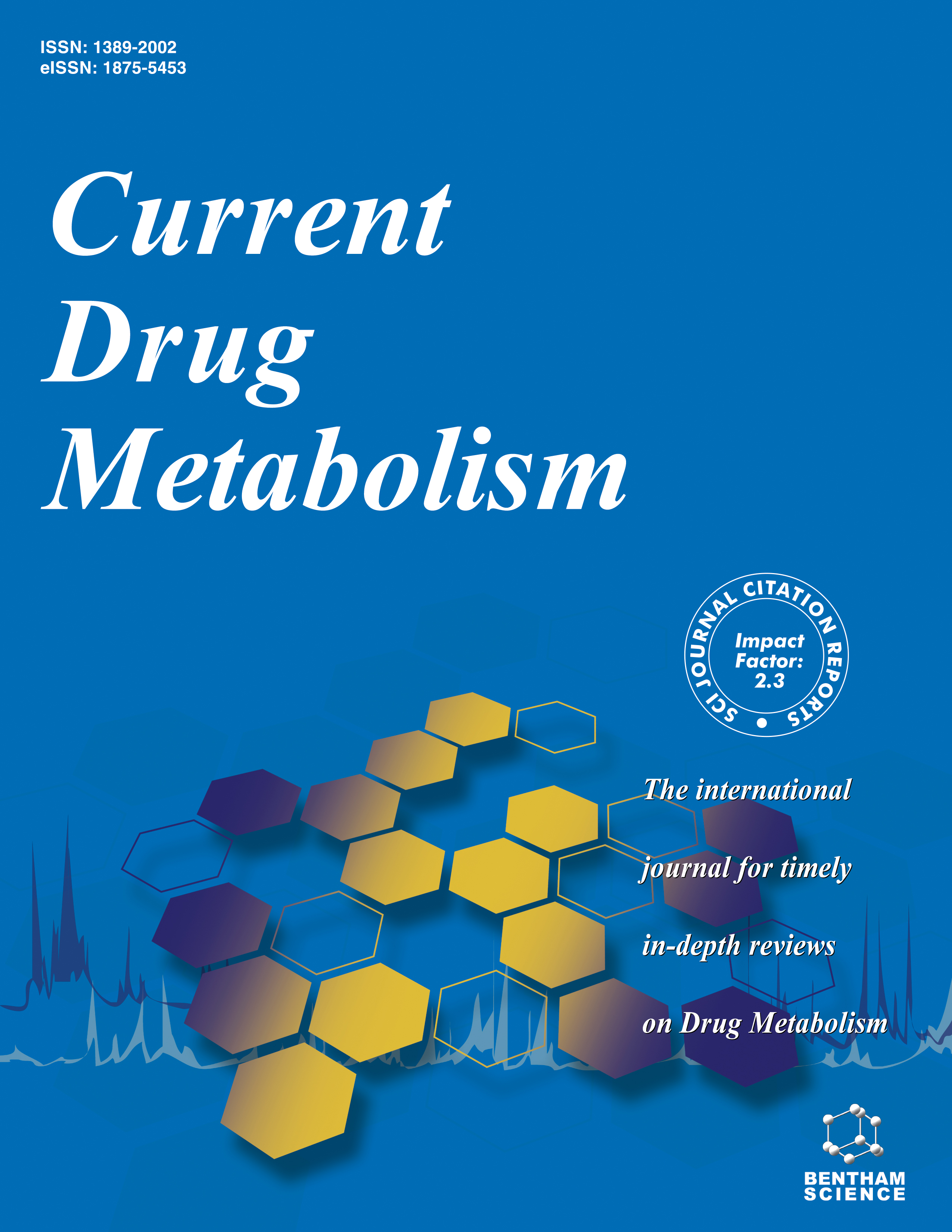- Home
- A-Z Publications
- Current Drug Metabolism
- Previous Issues
- Volume 25, Issue 6, 2024
Current Drug Metabolism - Volume 25, Issue 6, 2024
Volume 25, Issue 6, 2024
-
-
Hepatic Metabolic Enzyme Activity with Endogenous Substances-Current Status, Challenges and Limitations
More LessPrecision dosing is essential in improving drug efficacy and minimizing adverse reactions, especially in liver impaired patients. However, there is no objective index to directly evaluate the body's ability to metabolize specific drugs. Many factors affect the activity of enzymes, and alter the systemic exposure of substrate drugs, like genetic polymorphism, drug-drug interactions and physiological/pathological state. So, quantif Read More
-
-
-
Innovative Nanoscale Drug Delivery Strategies for Breast Carcinoma: A Comprehensive Exploration
More LessAuthors: Jaishree S., Kousalya Selvaraj, Prakash S. and Vineesh D.Breast cancer (BC) is one of the major causes of poor health in women and the most devastating disease after lung cancer. The term “cancer” refers to a collection of problems resulting from abnormal cell proliferation, particularly cells that can spread to other parts of the body. Surgery, followed by chemotherapy or radiotherapy, is now accepted for BC-related cancers. However, chemotherapy and radiotherapy are rare Read More
-
-
-
Biomimetic Nanoscale Systems for Targeted Delivery in Cancer: Current Advances and Future Prospects
More LessAuthors: Dilpreet Singh and Neelam PooniaThe field of cancer therapy has witnessed a transformative shift with the emergence of biomimetic nanoscale drug delivery systems. These innovative platforms draw inspiration from nature's intricate designs and have the potential to revolutionize cancer treatment by precisely targeting tumor cells while sparing healthy tissues. In this critical appraisal, we explore the current advances in biomimetic nanosystems, examini Read More
-
-
-
Effects of High-altitude Hypoxia on Drug Metabolism and Pharmacokinetics of Sedative-hypnotic Drugs and Regulatory Mechanism
More LessAuthors: Lu Tian, Guiqin Liu, Junjun Han and Xiangyang LiSedative hypnotics effectively improve sleep quality under high-altitude hypoxia by reducing central nervous system excitability. High-altitude hypoxia causes sleep disorders and modifies the metabolism and mechanisms of drug action, impacting medication therapy's effectiveness. This review aims to provide a theoretical basis for the treatment of central nervous system diseases in high-altitude areas by summarizing th Read More
-
-
-
Effect of Salbutamol on the Disposition Kinetics of Levofloxacin in the Plasma and Lung of Rats
More LessAuthors: Murat Ali Cicekler, Halis Oguz and Orhan CorumBackgroundAntibiotics and bronchodilator drugs can be used together in respiratory distress caused by bacterial infections. Levofloxacin (LVX) and Salbutamol (SLB) can be used simultaneously in respiratory distress. However, there have been no investigations on how the concurrent use of SLB can affect the pharmacokinetics of LVX in rats.ObjectiveThe purpose of this study was to investigate the influence of SLB on the plasma Read More
-
-
-
Carboxylesterase 1-Based Drug-Drug Interaction Potential of Remimazolam: In-Vitro Studies and Literature Review
More LessAuthors: Karl-Uwe Petersen, Wolfgang Schmalix, Marija Pesic and Thomas StöhrBackgroundThe ultra-short-acting benzodiazepine remimazolam, approved for procedural sedation and general anesthesia, is inactivated by carboxylesterase 1 (CES1).ObjectiveRemimazolam´s involvement in CES1-mediated drug-drug interactions (DDIs) was investigated.MethodsPossible interactions of remimazolam were studied in co-exposure experiments with eleven different drugs. Further, substrates and inhibitors of Read More
-
-
-
Quality by Design-Steered Development of Stealth Liposomal Formulation of Everolimus: A Systematic Optimization and Evaluation
More LessAuthors: Simranjeet Kaur, Rajveer Singh and Dilpreet SinghBackgroundEverolimus is a drug approved for the treatment of breast cancer with HR+ and advanced breast cancer reoccurring in postmenopausal women. The oral administration of EVE has been observed to have low oral bioavailability and severe epithelial cutaneous events that include rashes and lip ulceration followed by mouth ulceration after oral administration.AimThe present research aimed to enhance Read More
-
Volumes & issues
-
Volume 25 (2024)
-
Volume 24 (2023)
-
Volume 23 (2022)
-
Volume 22 (2021)
-
Volume 21 (2020)
-
Volume 20 (2019)
-
Volume 19 (2018)
-
Volume 18 (2017)
-
Volume 17 (2016)
-
Volume 16 (2015)
-
Volume 15 (2014)
-
Volume 14 (2013)
-
Volume 13 (2012)
-
Volume 12 (2011)
-
Volume 11 (2010)
-
Volume 10 (2009)
-
Volume 9 (2008)
-
Volume 8 (2007)
-
Volume 7 (2006)
-
Volume 6 (2005)
-
Volume 5 (2004)
-
Volume 4 (2003)
-
Volume 3 (2002)
-
Volume 2 (2001)
-
Volume 1 (2000)
Most Read This Month
Article
content/journals/cdm
Journal
10
5
false
en


